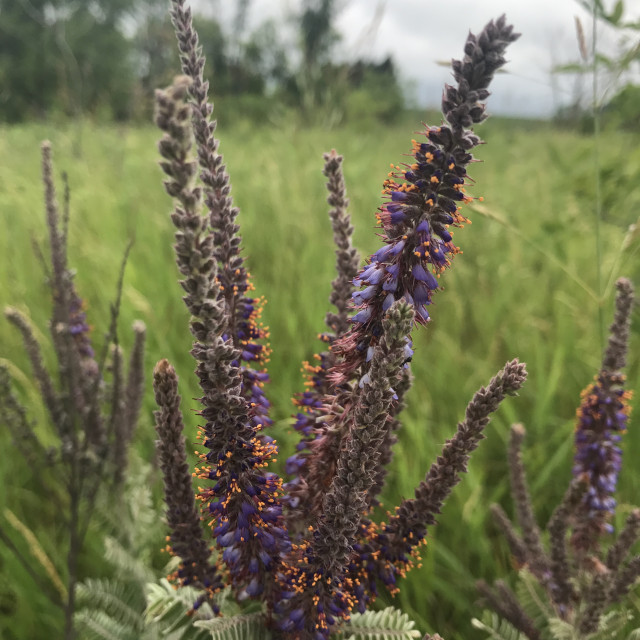COMMON NAME
Lead plant
SCIENTIFIC NAME
Amorpha canescens
Plant family
Pea (Fabaceae)
Plant group
Wildflowers and Herbs
Lead plant is a woody perennial with purple flowers arranged in spikes, native to the central United States and Canada.
31 reports
12+
OBSERVERS
31+
OBSERVATIONS
Identification hints
Showy plant with long spikes of purplish pea shaped flowers. Up to 3 feet tall, often sprawls along ground, especially in shade. Leaves often covered with whitish hairs (looking like lead dust). Associated with native prairie, limestone glades and woodlands. Pea family.
Did you know?
The latin species name for lead plant "canescens" means "becoming grey", referencing the purplish-grey flowers. Lead plant is often visited by pollinators like solitary bees. It is a drought and shade tolerant plant. Special root nodules allow lead plant to fix nitrogen (which many members of the Pea family can do) and this makes it an important plant in many prairie restorations.
DISTRIBUTION IN TH U.S.
Arkansas
,
Colorado
,
Iowa
,
Illinois
,
Indiana
,
Kansas
,
Louisiana
,
Michigan
,
Minnesota
,
Missouri
,
Montana
,
North Dakota
,
Nebraska
,
New Mexico
,
Oklahoma
,
South Dakota
,
Texas
,
Wisconsin
,
Wyoming
HABITAT
Lead plant is often found in prairies, sandy open woods, and limestone glades.
ATTRIBUTES
Leaves
Leaves are compound with up to 50 oval leaflets each about 3/4 of an inch long and covered in tiny white hairs that give leaves a silvery green appearance.
Flowers
Tiny purple flowers are arranged in 2-6 inch spikes and produce bright orange pollen on the tips of the stamens.
Fruits
The fruit is a hairy pod containing a single seed that is a smooth brown bean. Seeds are less than 1/8 inch long.
Bloom Time
June-August
See Menu
- 2021 Chicago Botanic Garden. All Rights Reserved.
-
Creative Commons
BY-NC-SA 4.0 - Terms of Use
- Privacy Policy
- Data Sharing and Citation Policies
- 2021 Chicago Botanic Garden. All Rights Reserved.



